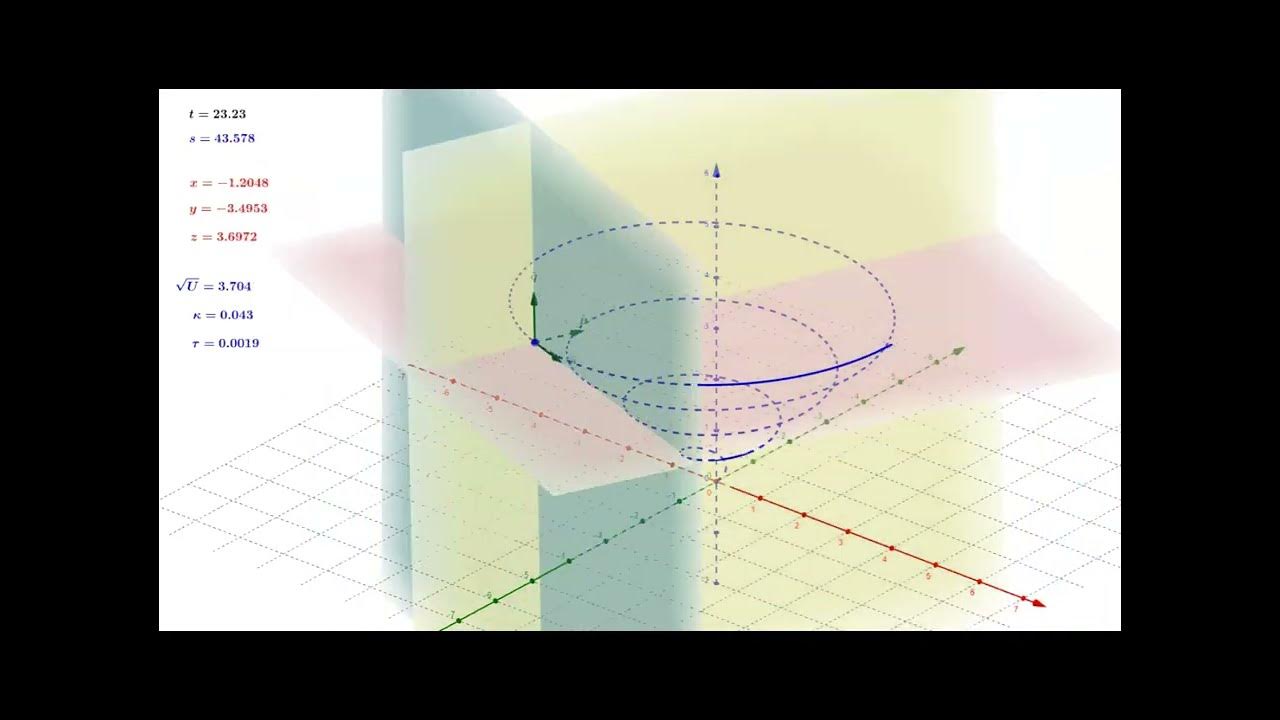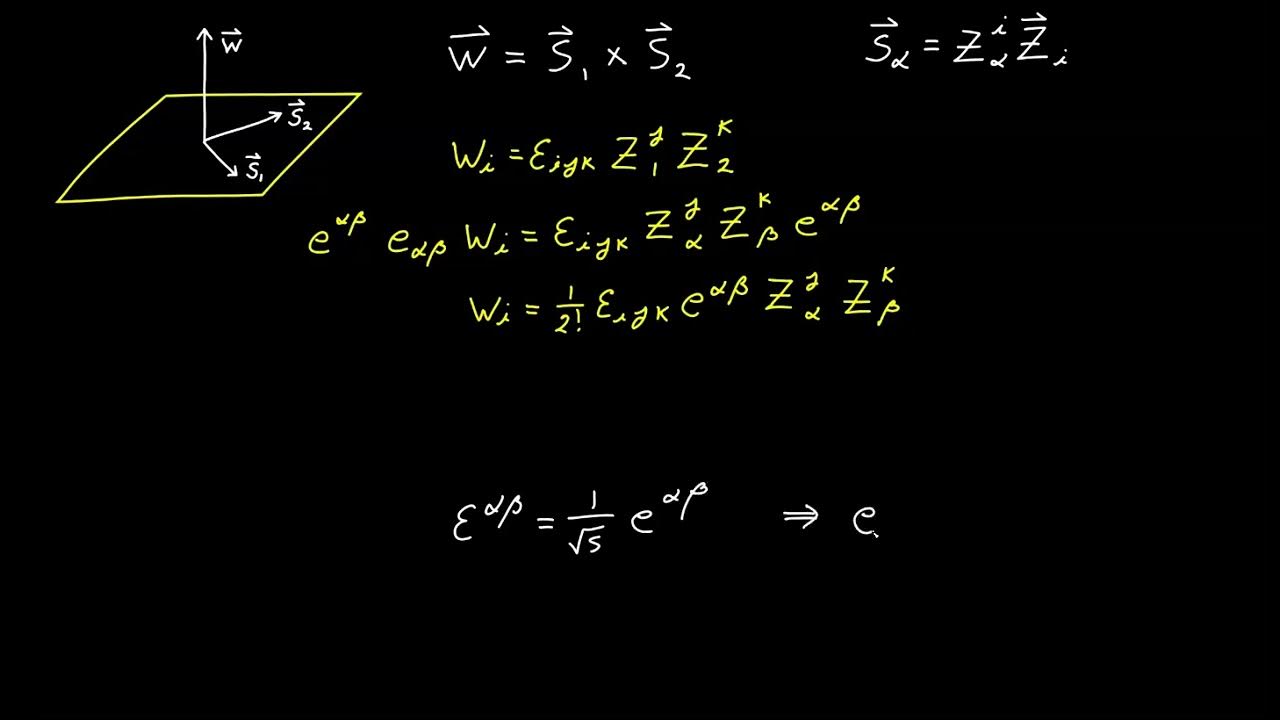The Gram-Schmidt Process
TLDRProfessor Dave's tutorial delves into the Gram-Schmidt Process, a mathematical method used to transform any set of basis vectors in a vector space into an orthogonal, and subsequently, an orthonormal basis. Starting with vectors that are not necessarily orthogonal, Dave explains step-by-step how to apply the Gram-Schmidt Process, beginning with the initial vector and systematically adjusting subsequent vectors to ensure orthogonality and normalization. Through a detailed example involving basis vectors in R3, the tutorial breaks down the process into comprehensible steps, showcasing how to achieve an orthonormal basis. This technique is essential for simplifying calculations in various vector spaces, including those involving functions, by providing a method to compute inner products uniquely.
Takeaways
- 😀 The Gram-Schmidt process generates an orthogonal basis from any set of vectors.
- 😉 It involves subtracting projections of earlier vectors from later vectors.
- 🤓 Each new vector has terms subtracted for all previous vectors.
- 🧐 The process uses vector dot products and vector lengths.
- 👍 First vector is just the original first basis vector.
- 👏 Later vectors subtract out overlap with previous vectors.
- 💡 Subtractions use projection fractions based on dot products.
- 📝 The new orthogonal vectors can be normalized to be orthonormal.
- 🔍 An example shows the full process for a 3D basis.
- 🤓 Understanding Gram-Schmidt helps with computations using orthogonal bases.
Q & A
What is the Gram-Schmidt process used for?
-The Gram-Schmidt process is used to generate an orthogonal or orthonormal set of basis vectors from any given set of basis vectors.
How do you construct the orthogonal vectors u1, u2, etc. in the Gram-Schmidt process?
-u1 is set equal to v1. u2 is set equal to v2 minus the projection of v2 onto u1. u3 is set equal to v3 minus the projections of v3 onto u1 and u2. The process continues similarly for higher order vectors.
Why is the Gram-Schmidt process useful?
-The Gram-Schmidt process is useful because orthogonal and orthonormal bases have many nice mathematical properties that make calculations involving them easier and more efficient.
What is the difference between an orthogonal and orthonormal set of vectors?
-An orthogonal set of vectors have dot products equal to zero with each other. An orthonormal set is orthogonal and also normalized to unit length.
What is the dot product used for in the Gram-Schmidt process?
-The dot product is used to compute the projections of the original vectors onto the orthogonal basis vectors. These projections are subtracted to make the vectors orthogonal.
How do you normalize the orthogonal vectors to make them orthonormal?
-Once the orthogonal vectors are constructed, they can be normalized by dividing each vector by its own length to make the lengths unity.
Does the Gram-Schmidt process work for any set of basis vectors?
-Yes, the Gram-Schmidt process can take any linearly independent set of vectors and construct an orthogonal set from them.
Why is summation notation used for the higher order vectors?
-The summation notation compactly represents having to subtract the projections onto all previously constructed orthogonal vectors, which increases for each new vector.
How does the Gram-Schmidt process change for different vector spaces?
-The process stays the same, but the definition of the inner product changes. For example, with function spaces the inner product becomes an integral.
What is an example application of using an orthonormal basis?
-Orthonormal bases are very useful in quantum mechanics for representing quantum states and operators.
Outlines
😀 Introducing the Gram-Schmidt Process
Paragraph 1 introduces the Gram-Schmidt process as a method for generating an orthonormal set of vectors from any given set of basis vectors. It explains that we start with basis vectors v1 to vn and derive new orthogonal vectors u1 to un using this process. The process involves subtracting off any components of the current v vector that are not orthogonal to previously generated u vectors.
📝 Step-by-Step Explanation and Example
Paragraph 2 provides a step-by-step explanation of the Gram-Schmidt process using mathematical notation and a concrete example with 3-dimensional basis vectors. It shows how to compute the u vectors by subtracting dot product terms involving previously generated u's from each v vector. It then works through a full example deriving an orthogonal set from the given basis.
Mindmap
Keywords
💡Gram-Schmidt Process
💡Orthogonal Vectors
💡Orthonormal Vectors
💡Vector Space
💡Basis of a Vector Space
💡Inner Product
💡Normalization
💡Vector Magnitude
💡Summation Notation
💡Dot Product
Highlights
Researchers developed a new method to sequence ancient DNA and recovered genomes from multiple Neanderthal remains
The Neanderthal genomes revealed evidence of interbreeding between Neanderthals and modern humans
Genetic analysis indicated Neanderthals contributed 1-4% of DNA to people outside Africa
Neanderthal DNA affects traits like hair and skin color, immunity, and metabolism in modern humans
The FOXP2 gene involved in speech and language shows a distinct human variant not found in Neanderthals
Comparative genomics reveals Neanderthals were closely related to modern humans, splitting 400-800k years ago
Neanderthals made sophisticated tools, controlled fire, lived in social groups, and buried their dead
Isotope analysis of Neanderthal bones indicates a mostly meat-based diet compared to early humans
Neanderthal cave art discoveries suggest similarities in symbolic thinking with modern humans
Climate change and competition from modern humans may have caused Neanderthal extinction
Future Neanderthal genome studies can provide more insights into human evolution and migration
Understanding interactions between Neanderthals and humans is key to explaining genetic traits today
Neanderthal DNA studies open up ethical issues about cloning or genetically engineering hybrids
More Neanderthal genome sequencing could uncover links to disease susceptibility in modern humans
Further research on Neanderthal genetics may reveal more about their cognitive abilities and culture
Transcripts
5.0 / 5 (0 votes)
Thanks for rating:





